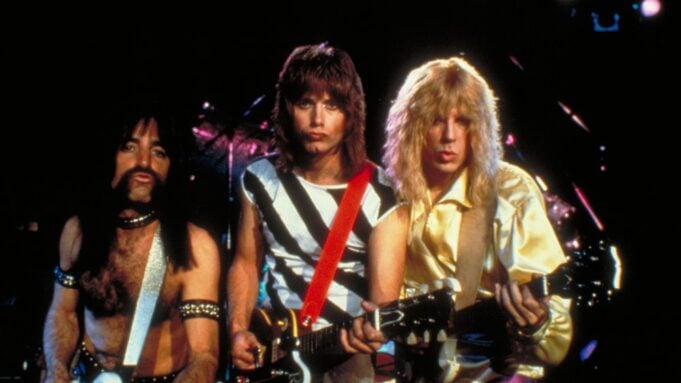If ever a film seemed at first like a long shot for the Library of Congress’ National Film Registry, it’s “This Is Spinal Tap.”
A “mockumentary” before the term existed, it was a comedy show skit that gradually evolved into a full-length film about a fictional — and terrible — British heavy rock band’s disaster-filled U.S. tour. It was shot on handheld 16mm cameras, and it was nearly all improvised. Yet it was also made by four professional actors who were gifted at improvisation — Christopher Guest, Michael McKean and Harry Shearer, all of whom are also talented musicians, and “All in the Family” actor Rob Reiner, who directed.
Every film studio rejected a 20-minute demo reel the creators had shot (most of the scenes from which made it into the final cut). But “All in the Family” creator Norman Lear saw something in it — his connection with Reiner certainly didn’t hurt — and invested the $2 million that got the film made and finally released in March of 1984.
Despite the confusion that surrounded its initial release, “This Is Spinal Tap” got good reviews, some of them rapturous. But its legend grew after it was released on home video, as more and more musicians saw it and talked about it; U2’s the Edge said it was so close to reality that it made him weep, Ozzy Osbourne himself told this writer a few years after its release, “Seen it? I’ve lived it!”
By the end of the 1980s, a VHS copy was pretty much mandatory for any rock band’s tour bus, and 41 years after its release, not only are David St. Hubbins (McKean), Nigel Tufnel (Guest) and Derek Smalls (Shearer) more famous than most real-life rock stars, the film is in the National Film Registry, a line from it is in the Oxford English Dictiornary, and the Writers Guild of America listed it as the 11th funniest screenplay of all time. But most of all, it is still side-splittingly funny, and most of its jokes about the music industry hold true.
As Reiner says below, for decades the creators declined to make a sequel, even as the “group” continued reunite for tours, TV appearances and cameos. But for a variety of reasons, now was the time.
“Spinal Tap II: The End Continues” will be released in theaters on September 12 — and a companion book will be released simultaneously — and features the original bandmembers as well as guest appearances from such fans as Paul McCartney, Elton John, Garth Brooks, Metallica’s Lars Ulrich and others.
Love Film & TV?
Get your daily dose of everything happening in music, film and TV in Australia and abroad.
But first, on Saturday, July 5, the original film will be reissued in a special “Remastrd” 41st anniversary edition via Bleecker Street and Fathom Entertainment. Variety caught up with Reiner last week to talk about all of the above.
Did you plan to do a sequel on the 41st anniversary, just to be on-brand?
We never planned to do a sequel ever! For years, people would say, “You have to make a sequel!” and we always said, “Nah, nah, we’ve done it — let it be.”
But over the years, I mean, the Library of Congress put it in the National Film Registry, the Oxford English Dictionary put “This goes to 11” as part of the lexicon. And then a number of years ago, Harry [Shearer] sued the people who [owned] the rights, because the four of us had 40% of the profits — 10% each — and over the years, with video and DVDs and foreign sales and all that, we’d made 82 cents apiece — I’m not exaggerating, that was the profit we got. Harry was pissed off, so he sued them and got the rights back, and that’s when we started thinking, “Should we?”
At first we thought no, the bar is too high. But then we met a couple of times and an idea started to percolate, and it came from a very natural place: The fact that [the Spinal Tap bandmembers] hadn’t played with each other for 15 years, that became a story point, and the fact that [actor] Tony Hendra, who played their manager Ian Faith, had passed away. We said, well, what if their manager’s daughter inherited a contract that calls for one more concert?
That didn’t seem valuable at first because they hadn’t played in 15 years — but we remembered that Kate Bush had a song that was on “Stranger Things” [the nearly 40-year-old hit “Running Up That Hill”], and all of a sudden there was a reemergence of that song and her. Well, what if a famous musician or someone starts screwing around with a Spinal Tap song, somebody catches it on an iPhone and puts it up on TikTok, it goes viral, and all of a sudden they become relevant again? So with all of those things together, we came up with this idea.
Spinal Tap has reunited for tours and concerts and lots of other appearances. How did you never seriously consider a sequel?
We were asked many, many times, and we always went, “Nah, we did it!” But not only did it start becoming part of the culture, it started folding in on itself in a weird way. Basically, Tap existed in a parallel universe; I mean, we almost never mentioned [specific real-life] bands in the film. But then the band became successful, they played Glastonbury, played in Royal Albert Hall, played Wembley, and real-life musicians started playing with them — it’s become this kind of weird Mobius strip where it just keeps folding into itself. So this new reality was created and the guys were having fun with it, they went out on tour a couple of times. But it wasn’t until get got the rights back that we said, Let’s see if we can do something.
Which rights exactly do you own now?
We own the film, the characters, the music, merchandising, and the rights for any sequels. And we’ve got a book that will come out at the time of the second film, which is September 12, with Simon and Schuster. I’ve got to show it to you, you’ll get a kick out of it, hold on … [Looks around office]
Here it is! [Holds up book titled “Fine Line Between Stupid and Clever” with Spinal Tap on the cover.] It’s a two-part book. The first part, “The Fine Line Between Stupid and Clever,”is the history of the film and it’s written by us. But if you turn it over [flips book so the back cover is showing, upside-down from the front], the other side is “Smell the Book,” and [Reiner’s character] Marty DiBergi interviews them and it’s the history of the band.

What more can you say about the sequel? You’ve just said a lot more than I could find online.
What do you want to know about it? I told you the story is that they’re forced to play with each other after 15 years of not playing or speaking to each other, and we indicate there’s bad blood. Marty goes out and finds them, they have to come back and play this concert in New Orleans. You find out what they’ve been doing for the last 15 years, and then in the course of the film, you find out what is causing the bad blood.
Why New Orleans?
I made two other films there, I like working there and it’s the birthplace of jazz and blues. And we just thought it was a cool music place.
How does the band sound?
Great! They’re still good. These guys are all musicians, and even Elton John says at one point in the movie that they’re not like other heavy metal bands; he says you don’t see anybody in a heavy metal band playing the mandolin. And Chris is a good mandolin player and you see him play it when they do “Stonehenge.” Every note of the first and second films is [live] — that’s the difference between this and, you know, the Monkees or some fake band.
I always felt that the fact they were playing live really gave the original film … credibility, although I’m not sure that’s the word. [Laughter]
When I put both films together, they would tell me, “You’re stealing a shot [from a different segment] where I’m not playing those notes — you can’t have my fingers doing that because it doesn’t look like I’m actually playing those notes,” so we had to be very vigilant about that when we’d cut to them performing. All three of them are like that.
Paul McCartney, Elton John and Garth Brooks are in the new film — can you say who else?
Lars Ulrich from Metallica is in it, Chad Smith from the Red Hot Chili Peppers, and Questlove.
Does Questlove weigh in as a musicologist or anything like that?
I’m not going to tell you what they weigh in as — you’ll see!
Going back to the first film, how did it evolve from the skit on “The TV Show”? That was an improvisation that just kept going?
“The TV Show” was a satire of various things on television. You saw me in a chair, flipping with a remote from one channel to the next: sitcoms, commercials, telethons, and one thing we did was a takeoff on a late-night rock show called “The Midnight Special” that was hosted by [legendary radio DJ] Wolfman Jack. There, you see Spinal Tap for the first time, performing this song “Rock n’ Roll Nightmare,” and it’s like an MTV video [before MTV]. If you look, you’ll see Russ Kunkel, a great drummer who played with Linda Ronstadt and Jackson Browne, is in it, and [singer-songwriter] Loudon Wainwright is the keyboard player. And during the making of that, when we had downtime, they started improvising as these British characters and they were really funny. And I said, Geez, could we find something else for these guys to do?
Harry and I started kicking around an idea for a movie about a rock and roll tour seen through the eyes of roadies, but then this movie “Roadie” came out that starred Meatloaf, so we said forget it. But then Chris and Michael put together this little video of the two of them running into each other in a hotel where they’re improvising as these British rockers, and we got back together and said, Let’s do it from the perspective of the band instead of the roadies. So that’s how it came together, but it took five or six years from the time we did “The TV Show” until we released the film.
What do you think Norman Lear saw in the film that the film studios didn’t? He invested $2 million in it.
Well, that was still a small amount of money — even in those days it was not a lot for a film, but we had been turned down by every studio.
I was almost going to make it at Avco Embassy Pictures, because there was a an executive there named Lindsey Doran who was looking for a director for another movie they were doing. This guy named Peter Turner, who was an agent at William Morris — he was not my agent and I wasn’t even with William Morris — had seen the 20-minute demo reel and said, “What about Rob Reiner?” And she said “What has he ever directed?” He said, Well, there’s this reel …
So she looked at the reel and said, “Ooh, this is good — forget the movie we’re trying to make, what are you doing with this?” I said we can’t get anybody to distribute it. She said she could convince the guy who runs Avco Embassy — Frank Capra II, son of the famous photographer — and he said, yes, I will distribute if you can find some financing. So I got a little financing, came back and said, “OK, we’re ready to go” — but then [legendary TV producer and “All in the Family” creator] Norman Lear and [business partner] Jerry Perenchio bought Avco Embassy. And, just like what happens many times when ownership changes, they scrapped all the projects that were there — including ours!
Of course, Norman was like a second dad to me, so I got a meeting and I was there with all the executives, “You’ve got to do this, it’s the best thing, it’s going to be a big hit the kids, they love music, they’ll come back, it’ll be repeat business!,” I’m going on and on and on. Apparently, after I left the room, Norman turned to everybody and said, “Who’s gonna tell him he can’t do it?”
And that was it, basically. Norman took a leap of faith — he was like my mentor, my angel. I was lucky to have him.
You shot 100 hours of footage for the first film, how on earth did you get through all of it?
It was crazy. I mean, the first cut was four hours long and we still had three hours of interview footage that we hadn’t folded in. It took us nine months because in those days we didn’t have computer to edit — we were literally cutting the pieces of film, splicing and reconnecting, and it took forever. But we essentially wrote the film [during editing] because the whole film is improvised.
The entire film was shot in L.A., so for the concert that were supposedly in different cities, did you just go to different venues in L.A.?
It was supposed to be a band on tour, so we had to get different looks, but yes, all those arenas and auditoriums were in Los Angeles, and we shot them all in one day — it was an 18-hour day, where literally they’d do a number, we’d pack up, move to the next place, just like a tour. I think it was five venues in one day.
It’s certainly unusual that you made your first film basically without a script. How did you do that?
To me, that was the easy part — we were all steeped in in improvisation. It’s something we were comfortable with and all the people in the film are good improvisational actors. You couldn’t do it unless you had people that, as Chris Guest terms it, know how to “schnadle” [a verb Guest invented for the kind of improvising in “Tap” and his later films like “Waiting for Guffman” and “Best in Show”].
The tough thing for me was to make sure we had that documentary feel. We only had one camera, so I got a documentary filmmaker named Peter Smokler, who was terrific. I picked him because he had shot tons of documentaries, including the Rolling Stones [“Gimme Shelter”] at Altamont.
He started to shoot and he said to me, “I don’t get it. What is this? This isn’t funny.” I said, what do you mean? He says, “This is exactly what [rock stars] do, what’s funny about this?” I tried to say, well, it’s very close to the bone, but it is a little bent. And it was tough for audiences because they didn’t know — I mean, we screened it in Dallas the first time and people said, “Why are you making a movie about a band nobody ever heard of — and one that’s this bad? Why wouldn’t you make a movie about the Rolling Stones or the Beatles instead?” I’d say, “Have you ever seen ‘Saturday Night Live’? It’s that kinda thing.’”
There is so much music-business expertise in the film, from Fran Drescher playing a cloying publicist to Paul Shaffer playing a blustery promotion guy. Where did it come from?
Well, during the ‘60s there was a big cross-pollination between the rock and roll world and the improv world. I was in a group called the Committee, which was offshoot of Second City, and during that time I hung out with Cass Elliott, and Steve Miller used to come by, and Janis Joplin would get up onstage and improvise with us. And, I mean, I went to school with Jim Morrison and Ray Manzarek from the Doors, so I was in that world a little bit, and I lived on the Sunset Strip. So those things were very familiar to me and to the guys. We knew a lot of those types of people, so we didn’t have to look very far to find them!

When you finished the first film, did you know you had something special?
Well, we knew we did what we had wanted to do. For me, I don’t like doing pure satire, it doesn’t resonate with me. I like to get some emotion in there — it doesn’t have to be a lot, but there should be some kind of emotional ballast. Satire and emotion… it’s not normal. They don’t want to be with each other, they don’t like each other, it’s oil and water. So I had to try to find a way to weave that in a little bit and still keep the satire there. And that came from the relationship between Nigel and David.
But did we know we had something that anybody besides us would like? No.
From Variety US































